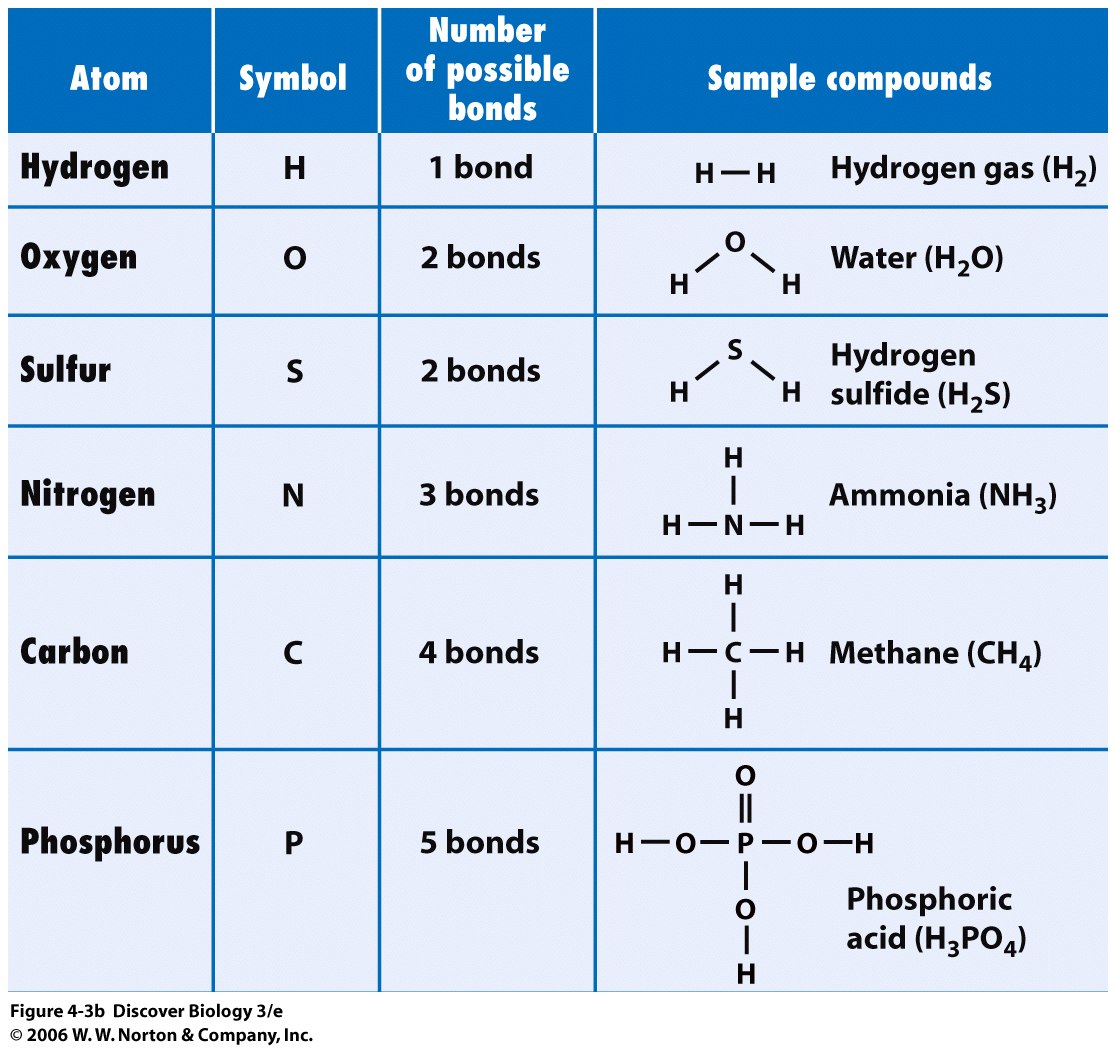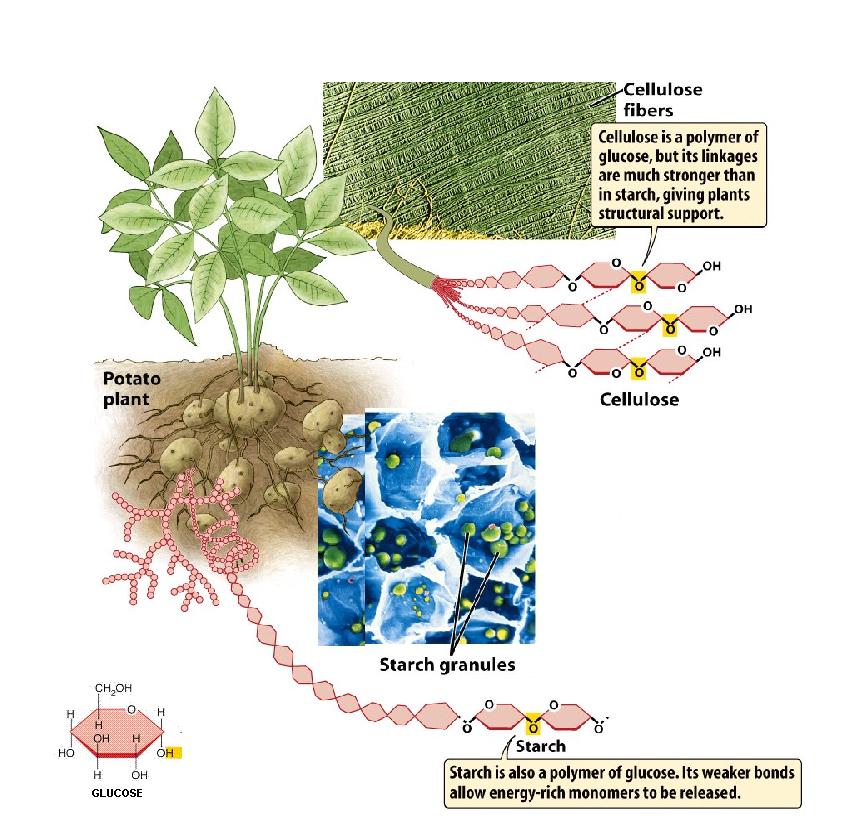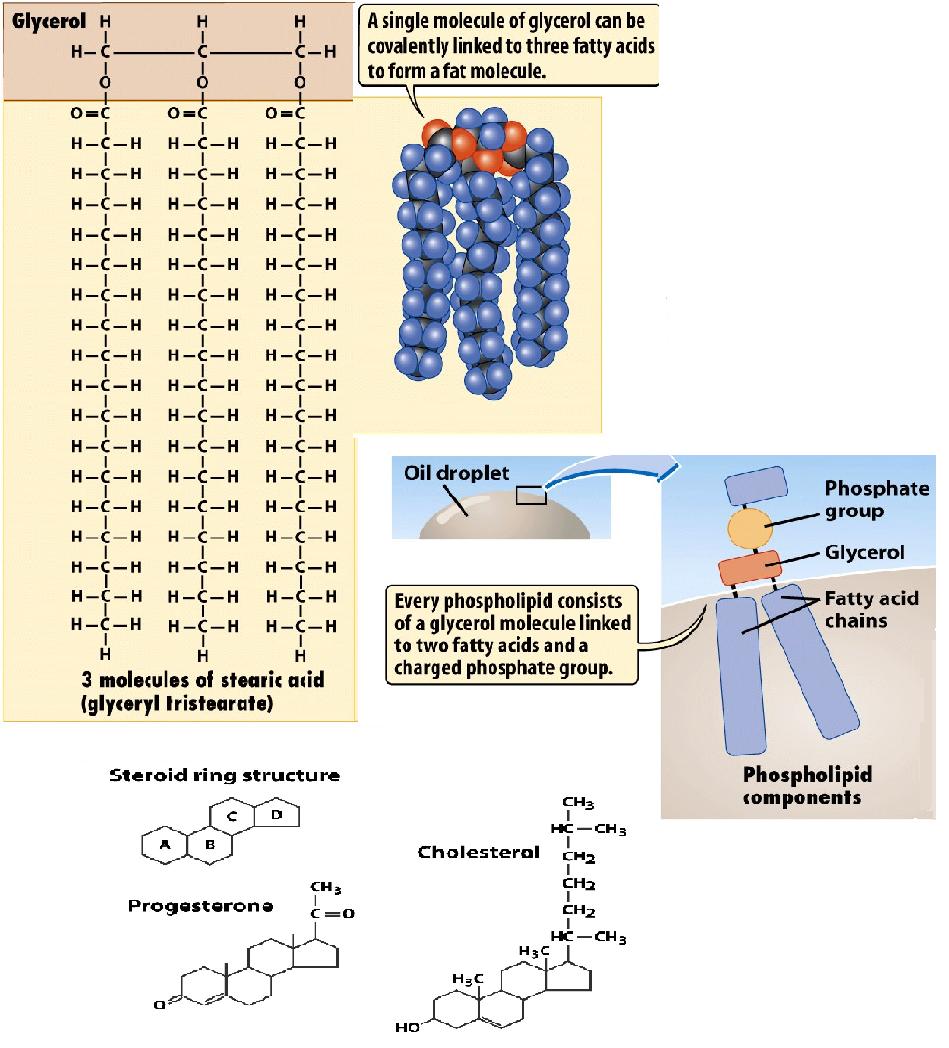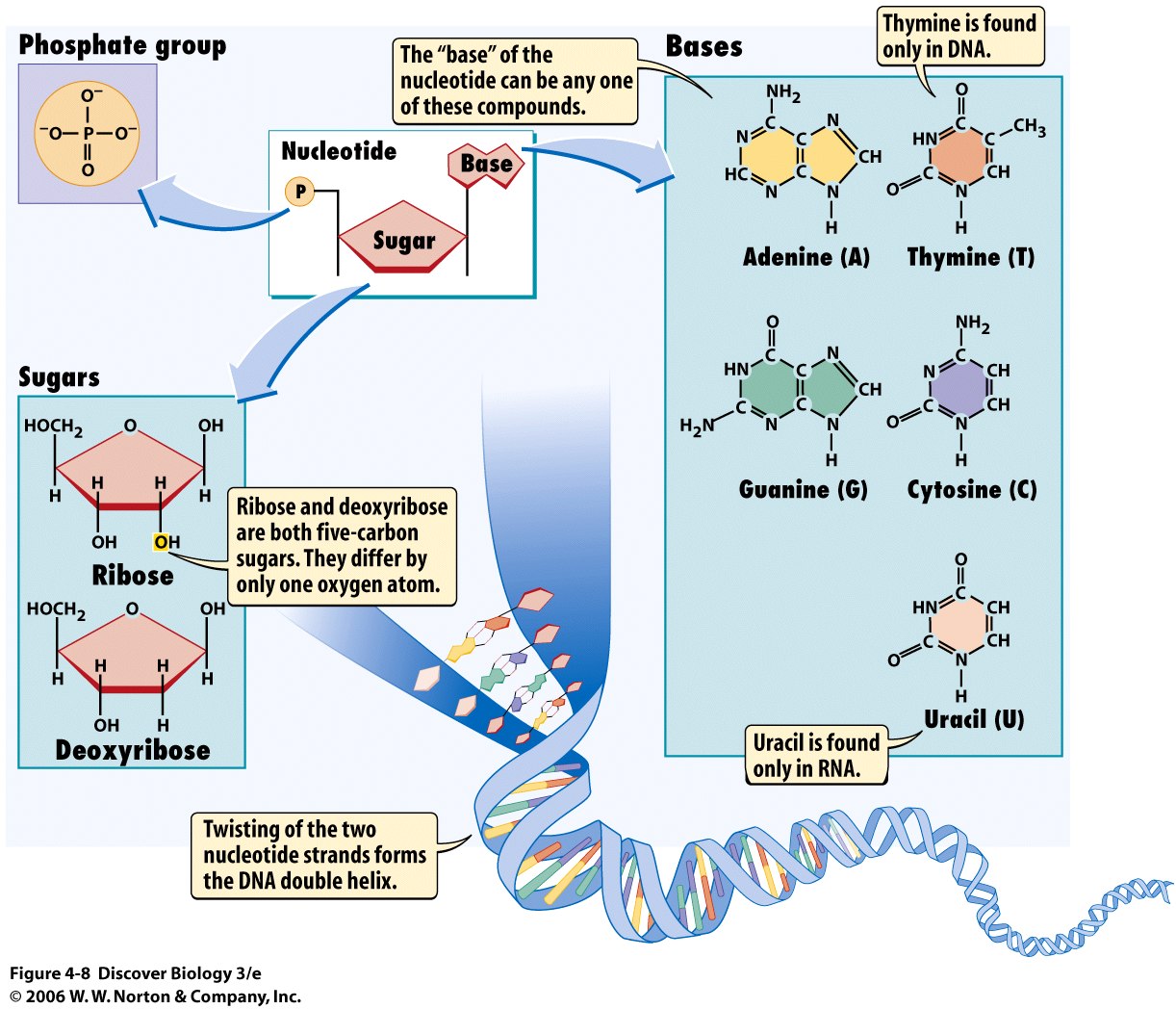
BIO 7: Preview for February 7, 2008
All living things are made of atoms and molecules, which interact
The number of covalent bonds an atom can form depends on how many spaces for electrons it has in its outer most orbital.
Many important molecules in living things are built around carbon and are called organic molecules.

Inorganic matter (e.g. water and ions ) is also important to living things.
Special Properties of Water
Special Properties of Ions
Concentrations of Hydrogen Ions (H+) expressed in pH scale (0-6.9 =acid, 7=neutral, 7.1-14 = alkaline or basic)

4 major groups of organic molecules in living things. They all
Are built around carbon
Have small subunits (monomers) that can be joined to form large molecules (polymers)
Can have large, complex shapes
Have functions related to their structures
|
Group of Organic Molecule |
Subunit (Monomer) |
Subgroups |
Examples and Functions |
|
Carbohydrates |
Monosaccharide |
Monosaccharides Disaccharides Polysaccharides |
Glucose and Galactose: store energy Sucrose and Lactose: store energy Glycogen, Starch: store energy Cellulose, Chitin: form tough fibers and covers |
|
Lipids |
Fatty Acid (for some) |
Neutral Lipids Phospholipids Steroids |
Wax and Oil: waterproof cover, store energy Cell membrane component: selective cover Testosterone, Progesterone: cell communication |
|
Proteins |
Amino Acid |
Enzymes Structural Units Glycoproteins Carriers Antibodies Contracting fibers |
Lactase: speeds breakdown of lactose Keratin: makes up bulk of hair Cell surface receptors: detect molecules outside Hemoglobin: specifically carries oxygen Gamma globulin: inactivates invaders Actin and myosin: make muscles move |
|
Nucleic Acids |
Nucleotide |
ATP
RNA (Ribonucleic Acid) DNA(Deoxyribonucleic Acid) |
Adenosine Triphosphate: carries energy for immediate use by cells mRNA for lactase: carries genetic information for making lactase (short term)
gene for lactase: carries genetic information for making lactase (long term) |


What does this http://www.youtube.com/watch?v=Uf17fOvEAWk&feature=related have to do with chemistry?

Food Pyramids show recommended diet choices.